Cephalotaxus harringtonia 'Fastigiata' (Upright Japanese Plum Yew, Fastigiate Plum Yew)
Michael's Opinion
A slow growing upright plant that is often confused with T. baccata 'Fastigiata'. Easy and relatively problem free in mild, temperate climates its dark foliage throughout the season is a steadfast welcome punctuation point in the landscape.
Botanical Information
| Family | Cephalotaxaceae |
| Genus | Cephalotaxus |
| Species | harringtonia |
| Cultivar | 'Fastigiata' |
| Synonyms | Formerly listed in the Taxaceae family. |
| Category | Woody |
| Type | Shrub (evergreen) |
| Origin | Introduced from Japan in 1830 to Ghent, Belgium by Dr. von Siebold. |
| Pronunciation |
Details
| USDA Hardiness Zone | 5 - 8 |
| USDA Hardiness Ref. | |
| Canadian Hardiness Zone | 6 to 9 |
| Canada Hardiness Ref. | |
| RHS Hardiness Zone | H7 - H4 |
| RHS Hardiness Ref. | |
| Height | 3 m |
| Spread | 1.5-2 m |
| Growth | Slow |
Description and Growing Information
| General Description | It is tolerant of urban pollution and will even thrive in inner city environments. Plants are commonly called plum yews because the fruit on female plants resemble tiny plums and the foliage resembles that of yews (Taxus). |
| ID Characteristic | Coniferous, evergreen shrub with erect branches and a columnar habit to 3 m high and 2 m wide. |
| Shape | Rotund- and narrowly upright. |
| Landscape | Excellent evergreen conifer for shady locations in the landscape including hedges and screening. |
| Cultivation | This shrub performs well in both full sun and full shade. It does best in average to evenly moist conditions, but will not tolerate standing water. |
| Notable Specimens | The Gardens of Fanshawe College, London, Ontario, Canada. Whistling Gardens, Wilsonville, Ontario, Canada. The Royal Botanic Gardens, Edinburgh, Scotland. Bok Tower Gardens, Lake Wales, Florida, United States of America. |
| Habitat | Horticultural origin. |
| Leaf Description | Needles are dark green, spirally arranged, bowed, 3-5 cm long, sharp pointed with lemon coloured new shoots in spring. |
Photographs
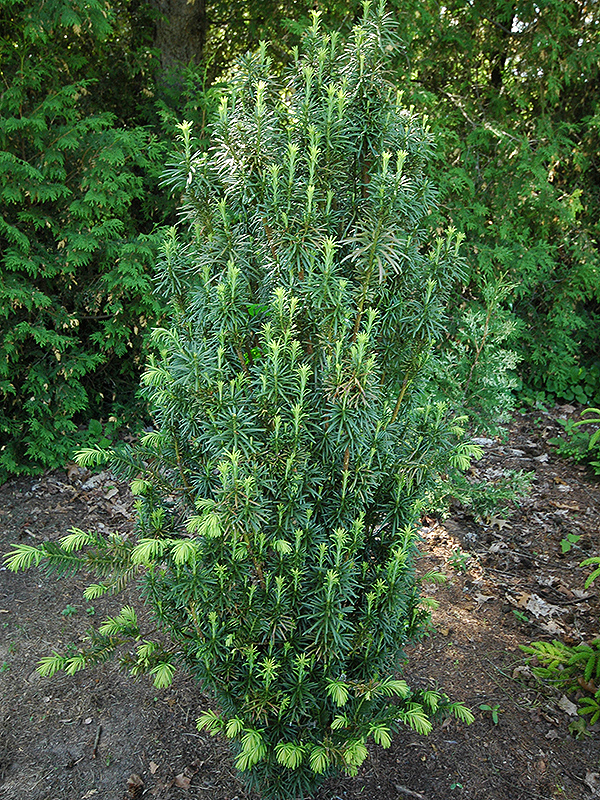
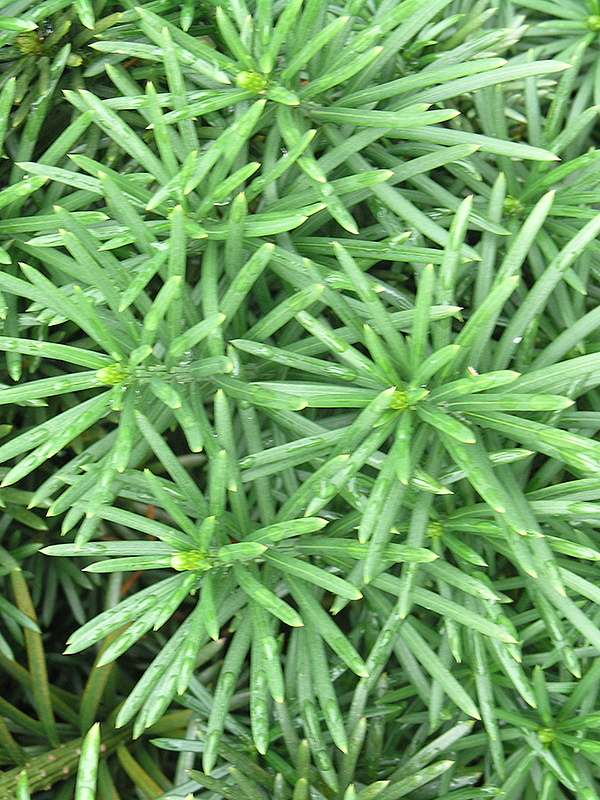
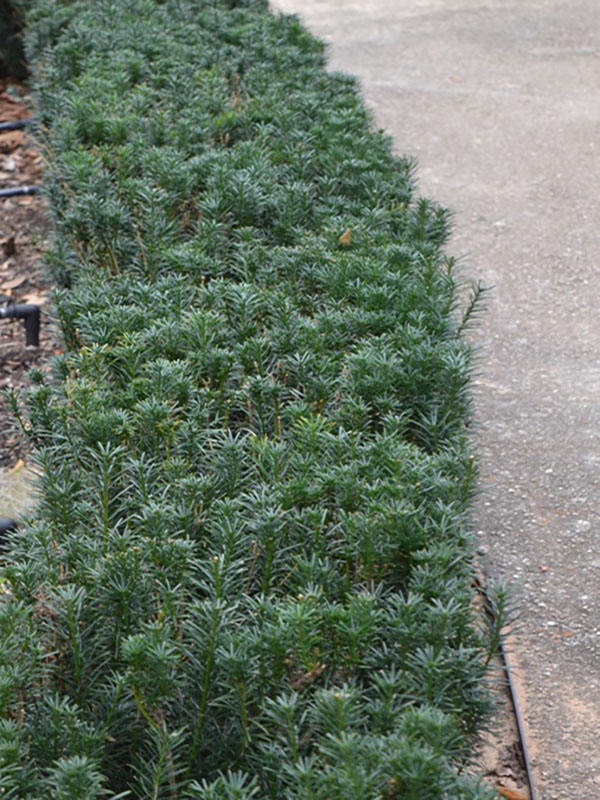
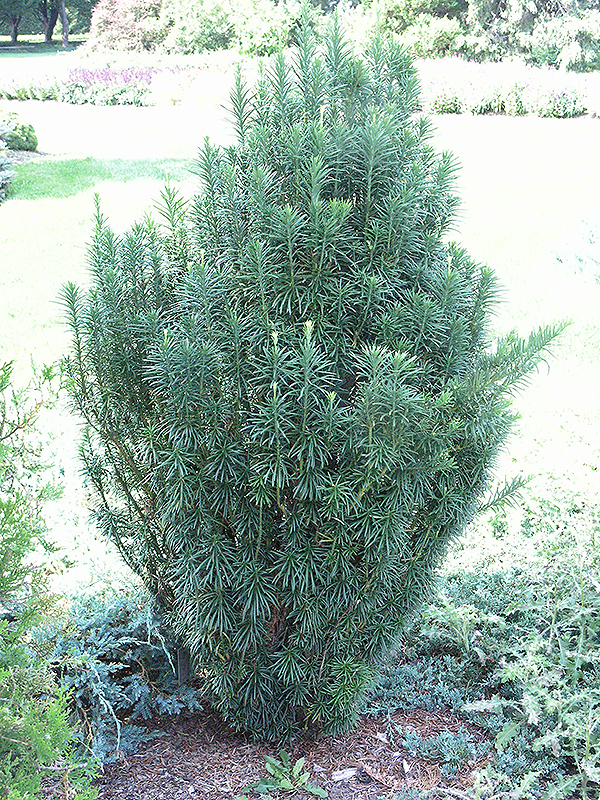
Cephalotaxus harringtonia 'Fastigiata', form, Bok Tower Gardens, Lake Wales, Florida, United States of America.
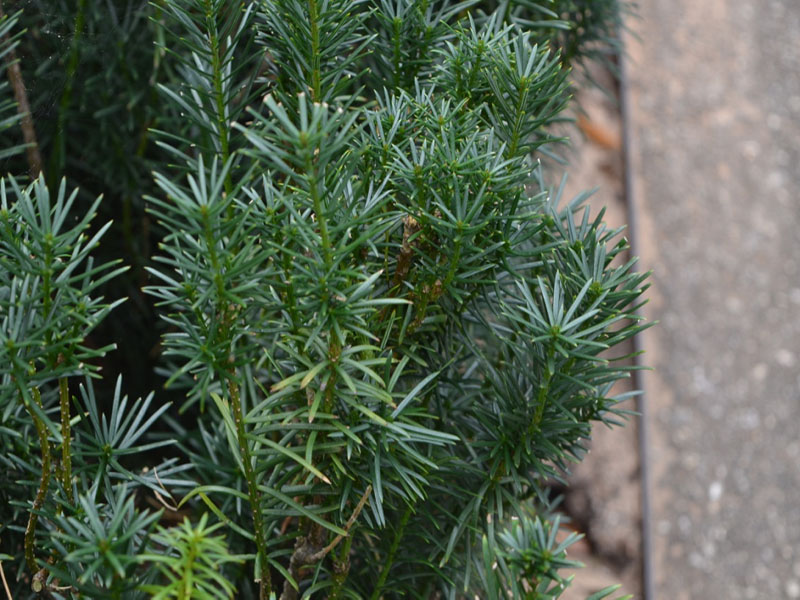
Cephalotaxus harringtonia 'Fastigiata', leaves, Bok Tower Gardens, Lake Wales, Florida, United States of America.
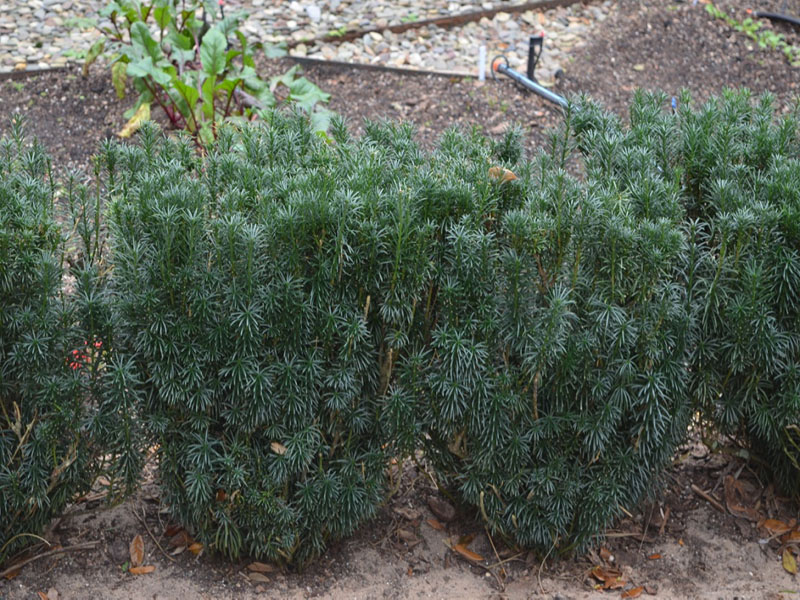
Cephalotaxus harringtonia 'Fastigiata', planted as a hedge, Bok Tower Gardens, Lake Wales, Florida, United States of America.